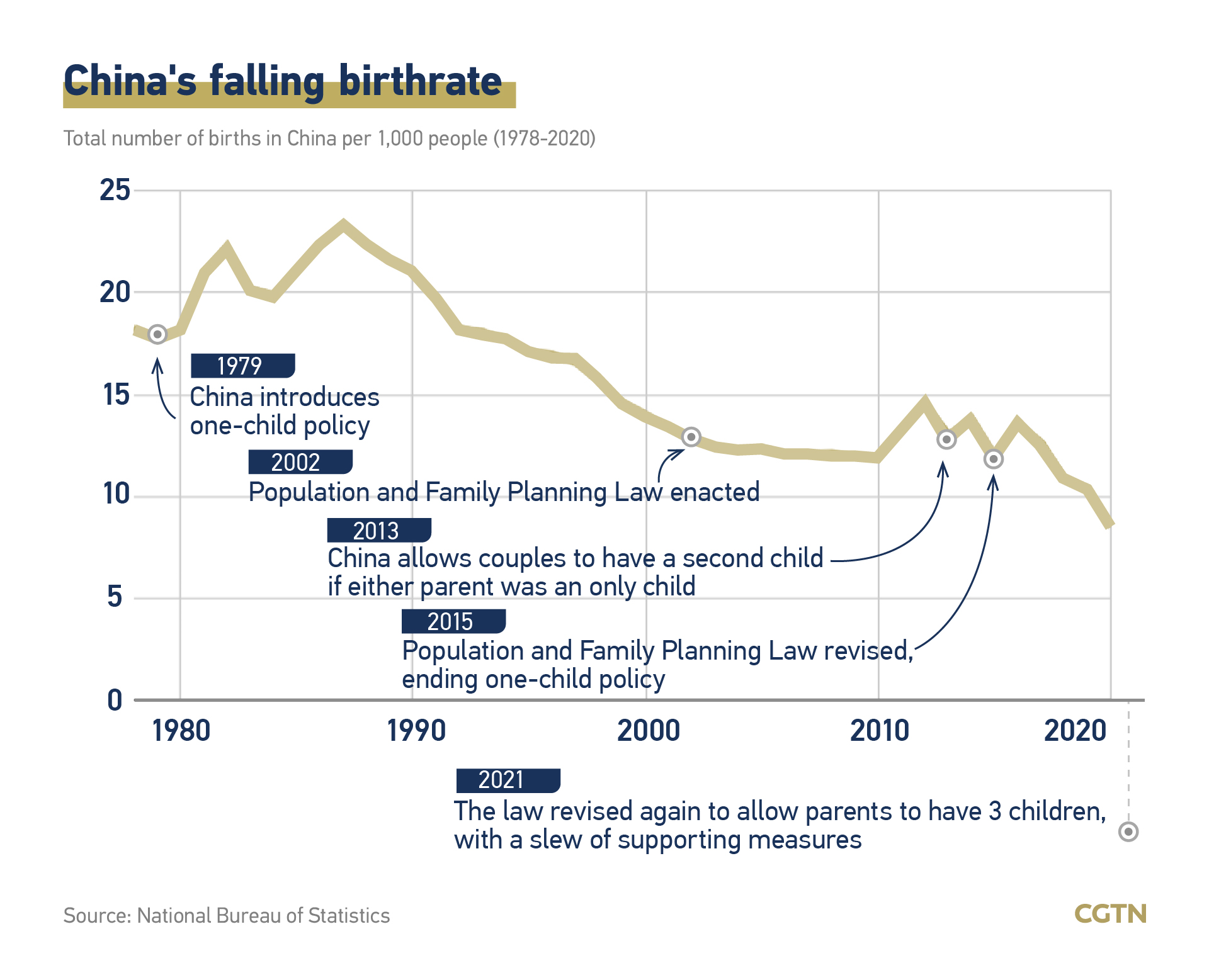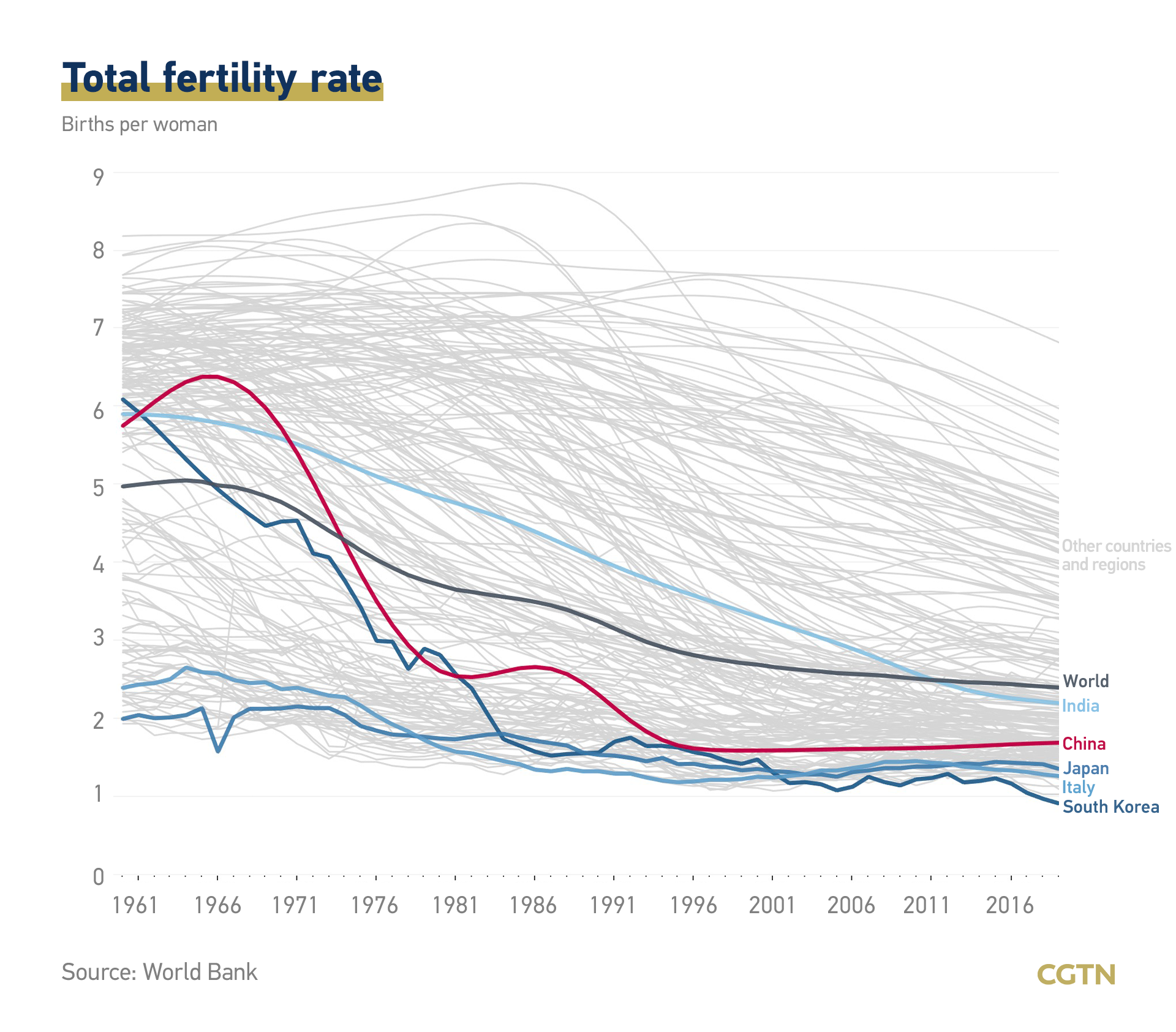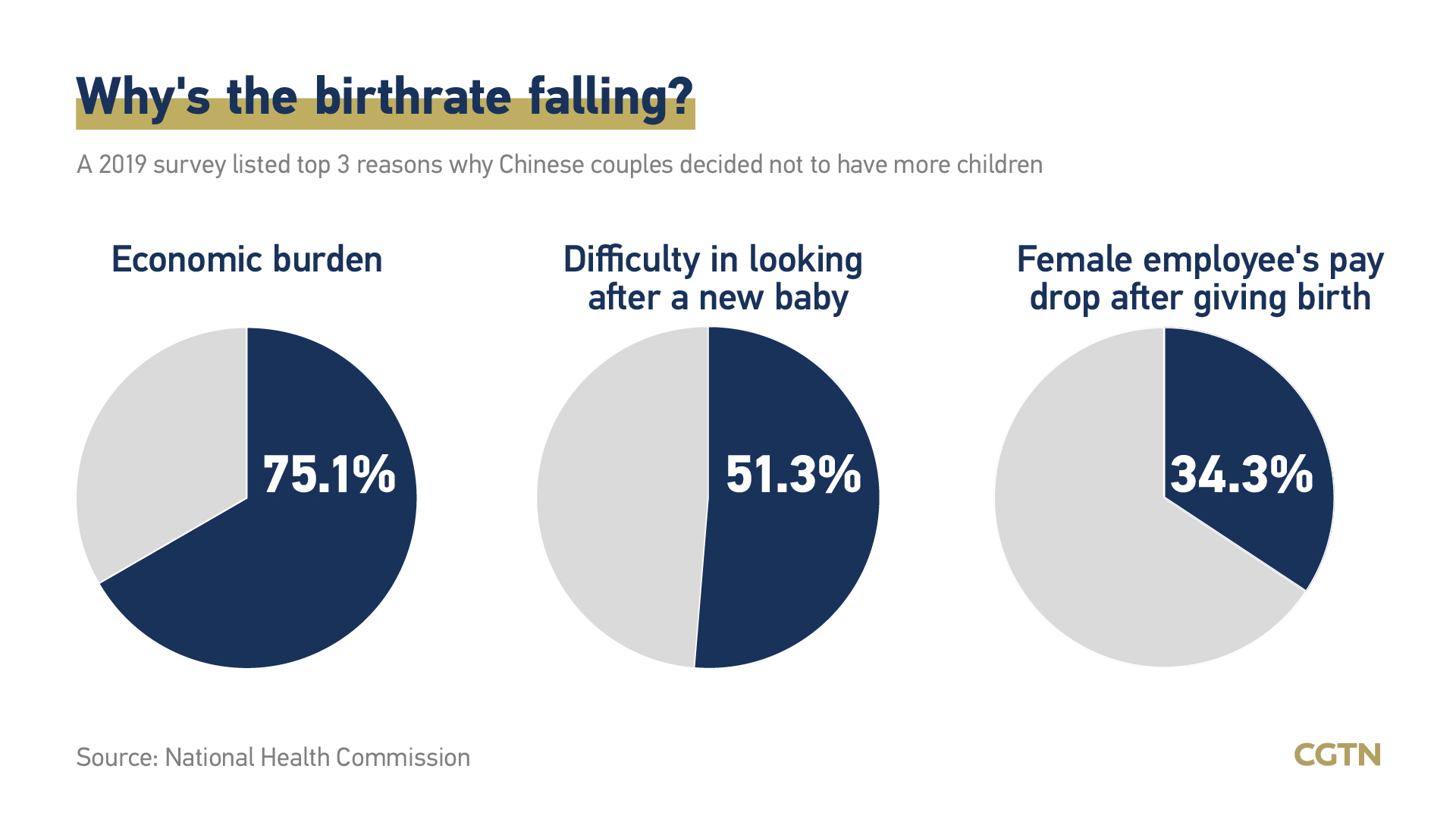China's top legislators on Friday revised the country's law on population and family planning, formalizing its three-child policy.
This is the second time that the law has been revised since it was enacted in 2002.

In 1982, the one-child policy was inserted into the country's Constitution, when the government was eager to halt rapid population growth.
In practice, it was a combination of diversified policies covering different sections of the population. For example, many regions allowed rural couples to have a second child, and ethnic minority groups were also allowed to have more than one child per couple.
But the overall impact of the policy, together with the country's rapid economic development and social change, contributed to a rapid fall in the birthrate in the 1990s, with low fertility continuing into the 21st century.
Faced with a shrinking workforce and aging society, China allowed couples to have a second child in 2013 if either parent was an only child – two years before the Population and Family Planning Law was revised and the one-child limit was fully scrapped.
The policy shift to two children contributed to millions of newborns, but the overall birthrate still registered a downward trend.
Last year, China recorded a fertility rate of just 1.3 children per woman, below the 2.1 replacement rate required for a population to remain stable, according to the results of the seventh national population census released by the National Bureau of Statistics (NBS).
Data from the World Bank also indicates that China's figure has been well below the world average for decades.

Experts have predicted that without strong policy intervention, China's fertility rate could sink to the lowest in the world.
So why not fully abolish birth restrictions this time?
China is still under pressure from the size and structure of its population, and the three-child policy has taken these factors into account, according to officials.
"It will play a positive role in achieving an appropriate fertility level, improving the population structure, maintaining the advantage of human resources, and promoting the long-term balanced development of the population," Ou Xiaoli, an official with the National Development and Reform Commission, said at a July press conference.
Also, the effect of childbirth policies on boosting fertility is diminishing, and the lack of supporting measures has become the key problem.
Top obstacles that have left Chinese parents conflicted over having more children have included the increasing economic burden, the shortage of infant care service and the impact on their careers, according to a nationwide survey in 2019.

A survey by the NBS showed that Chinese women, on average, were only willing to have 1.8 children last year, on par with aging societies like Japan and Italy.
This time, the birth policy change will come with a slew of supporting measures in such areas as funding, taxation, insurance, education, housing and employment to reduce the burden of childbirth and child-rearing.
China's recent crackdown on after-school for-profit tutoring is the latest initiative that is expected to help alleviate the skyrocketing cost of education for families.
As planned, by 2025, China will establish a policy system that actively supports births with better services and lower costs in childbearing, care and education. The gender ratio of newborns will be more balanced and the population structure will be improved.
Graphics: Feng Yuan

